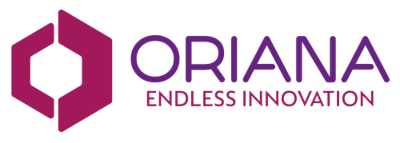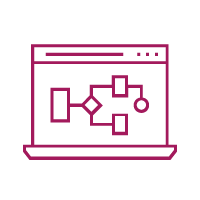“You don’t need a weatherman to know which way the wind blows.” With global warming literally a hot topic, we won’t speculate on that, but in the area of no-code and low-code development, the weather is looking rather sunny. We’ve survived the chill of the first month of the 2020s, so what lies ahead during the rest of the year? As a leading provider of low-code solutions, you’d expect that Oriana sees the forecast as extremely promising, but we’re not the only ones predicting the increasing uptake of low-code. Let’s review some of the developing trends:
Democracy rules, OK
The rise and rise of Digital Natives means that these people who have always interfaced with the world digitally, are now of an age where they are established in the workplace. They’re tech-savvy and use an array of apps in their everyday lives, so why would they not want to get hands-on with the processes and workflows of their jobs? Digital Natives expect the apps they use at work to be approachable and consumer-like.
This has coincided with the availability of low-code solutions, making it possible for Citizen Developers to easily collaborate, and design systems that would previously have occupied many months of specialist IT programmers’ time. Furthermore, because Citizen Developers are the actual users of the systems they help create, the results are much more likely to be fit for purpose.
Another way of characterizing this process is that of ‘Democratization’ which, according to Forbes sees that ‘Users – even those with the minutest technical training – will gain access to tools and data that they will be able to put to work in their daily jobs, without the need to run to their IT departments to set things up.’ Although this steady movement of democratization and citizen development may suggest that traditional programmers will soon be out of a job, the Forbes article sees that for the foreseeable future up to 80% of business-critical tasks are still likely to be undertaken by the IT department.
Innovation at the edge
It’s clear that the market for low-code platforms is growing steadily. Back in 2016, it was worth USD 3.6 billion, and research suggests a market value of USD 27.23 billion by 2022, which equates to a Compound Annual Growth Rate of 44.49%. Much of this growth is driven by the need for innovation felt by most organizations because innovation provides a competitive edge. The value of low-code approaches is that the innovation pool becomes much wider and deeper because more employees in a company can design their ideal workflows, bringing huge potential advantages.
This trend will continue as companies could otherwise, “Fall behind their competitors if they continue to limit innovation to a handful of people or a single department. To help facilitate more innovation, many will use low-code platforms to quickly transform ideas into prototypes, minimum viable products, and even entire applications.”
As well as already established low-code use cases such as the back-office applications typified by Oriana’s Low-Code Platform, low-code will also increasingly become the default approach for new revenue-driving applications. Low-code is fully capable of delivering enterprise-grade systems, a trend supported by the Gartner review of the ‘Magic Quadrant’ which predicts that within the next four years low-code application development will be responsible for 65% of all development activity.
According to a Forrester review of the sector, “Low-code development platforms are emerging as a key strategy to accelerate app delivery to support digital business transformation. And they have the potential to make software development as much as 10 times faster than traditional methods.”
The rise of the robots
Speed is also a factor added by the increasing integration of AI and RPA (Robotic Process Automation) making their presence felt in the low-code sector. Why waste hours and hours of company time doing repetitive, boring jobs that can be accomplished more quickly and efficiently by machines? This is especially the case in any workflow-based process and numerous back-office tasks. Citizen Developers and Digital Natives, in general, will increasingly turn to AI and RPA to speed up processes. Oriana’s partnering with UIPath (motto: ‘Tedium is our medium’!) paves the way for ever easier and more efficient development, allowing enterprises to jumpstart their planned digital transformation by identifying automation opportunities – and providing the correct tools for the job.
A perfect storm
Weather forecasters talk about ‘a perfect storm’, but what we’re seeing for 2020 is a coming together of perfect conditions in the low-code market. Democratization, an ever-expanding sector, and the increasing integration of IA and RPA mean that low-code is becoming the trusted first point of call for mission-critical apps.
What this means for businesses not yet engaged with the low-code approach is that the time is right to begin exploring the huge potential that low-code solutions offer. As the Forrester Wave report of 2019 suggested, low-code adoption can enable companies to ‘meet the needs of sophisticated IT teams, deliver mission-critical systems, and have a strong global presence’.
At Oriana that’s the sort of weather forecast we really like.



